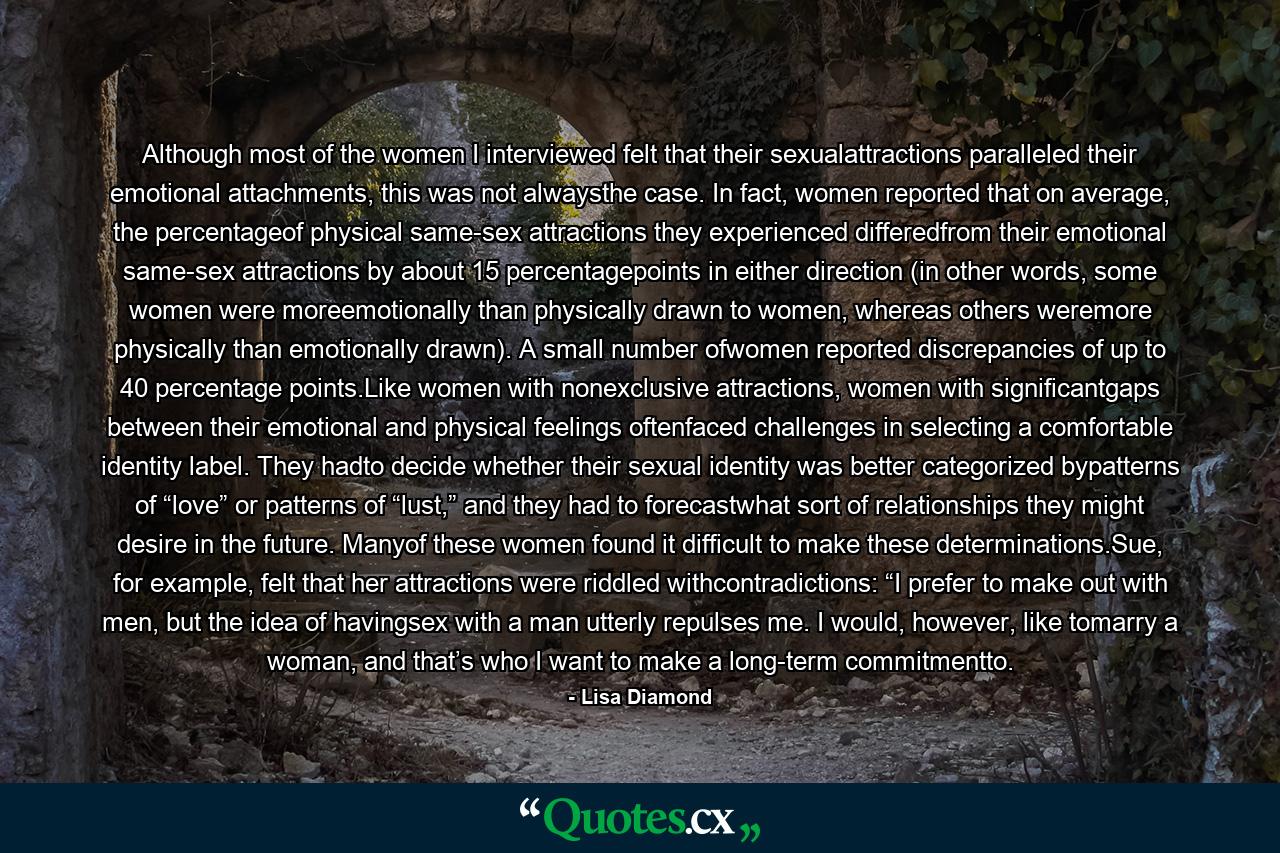Although most of the women I interviewed felt that their sexualattractions paralleled their emotional attachments, this was not alwaysthe case. In fact, women reported that on average, the percentageof physical same-sex attractions they experienced differedfrom their emotional same-sex attractions by about 15 percentagepoints in either direction (in other words, some women were moreemotionally than physically drawn to women, whereas others weremore physically than emotionally drawn). A small number ofwomen reported discrepancies of up to 40 percentage points.Like women with nonexclusive attractions, women with significantgaps between their emotional and physical feelings oftenfaced challenges in selecting a comfortable identity label. They hadto decide whether their sexual identity was better categorized bypatterns of “love” or patterns of “lust,” and they had to forecastwhat sort of relationships they might desire in the future. Manyof these women found it difficult to make these determinations.Sue, for example, felt that her attractions were riddled withcontradictions: “I prefer to make out with men, but the idea of havingsex with a man utterly repulses me. I would, however, like tomarry a woman, and that’s who I want to make a long-term commitmentto.
